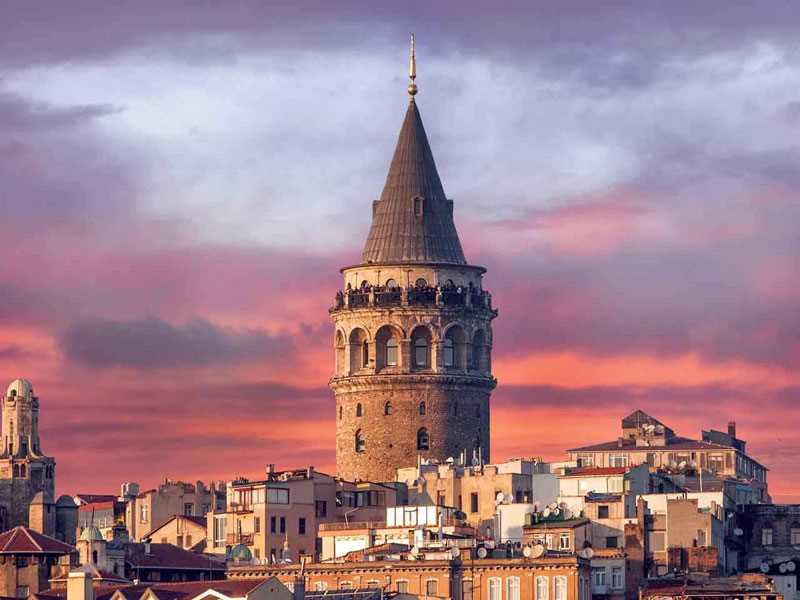The Galata Tower is one of the most important historical monuments in Istanbul. The Galata Tower is located in the Galata area, close to the Karakoy district of the European section of Istanbul. There are many popular cafes and restaurants near the tower.
The tower consists of nine floors, with a height of 66.90 meters, an outer diameter of 16.45 meters, an internal diameter of 8.95 meters, a thickness of 3.75 meters and a height of 35 meters above sea level. The tower has two elevators that can be used to climb from the second floor to the ninth floor. At the top of the tower there is a restaurant and cafe overlooking the sea and the Bosphorus. On the 8th floor there are several bathrooms and a studio for traditional Ottoman clothing, including the clothes of the Turkish bride Henna.
The Galata Tower has a spectacular view, and many sights of Istanbul can be seen from the top of the tower. Such as Galata Bridge, Golden Horn Bay, Bosphorus Bridge, New Mosque, Sulaymaniyah Mosque, Sultanahmet Mosque, Hagia Sophia Museum, and the Egyptian Market.
History of the construction of the tower of Galata
There is no definite information about the tower's construction time, but it is said to have been built in 507 CE under the reign of the Emperor Eustenianus. This tower, which was called the "Genoese" by the Byzantines, called the "Great Tower", took its form close to the present in 1348 AD during the Genoese era. The tower was restored in 1509, The famous Ottoman "Khairuddin". The tower was used during the reign of Sultan Suleiman the Magnificent as a prison for the convicts who were working in the shipyard of Qasim Pasha. In the sixteenth century the astrologer "Taqi al-Din Effendi" built an observatory on Qatah and after being used as a watch for a period that was converted into a prison under the reign of Sultan "Murad III."
In 1638, during the reign of Sultan Murad III, Hazarfin Ahmed Shalabi installed industrial wings and flew from the roof of the tower to the Oskodar region on his famous journey. At the beginning of the 17th century, the tower was used as a place for the elements of the Ottoman military parade until it was converted in 1717 to an observatory to monitor the area of Istanbul due to the large increase in fires. Unfortunately, the tower was unable to save itself from the fire and burned in 1794.
The tower was restored after being exposed to fire during the reign of Sultan Salim III. In 1831, the tower was exposed to another fire. As a result, Sultan Mahmoud II closed the roof of the tower with a two-story pyramid in the form of a hood. And put on the tower writing reminiscent of the restoration process equipped by "Berto Pasha." In 1875, as a result of a severe storm, the pyramid roof of the tower was destroyed in 1960 and the tower was used today by a private company for a tourist destination.








